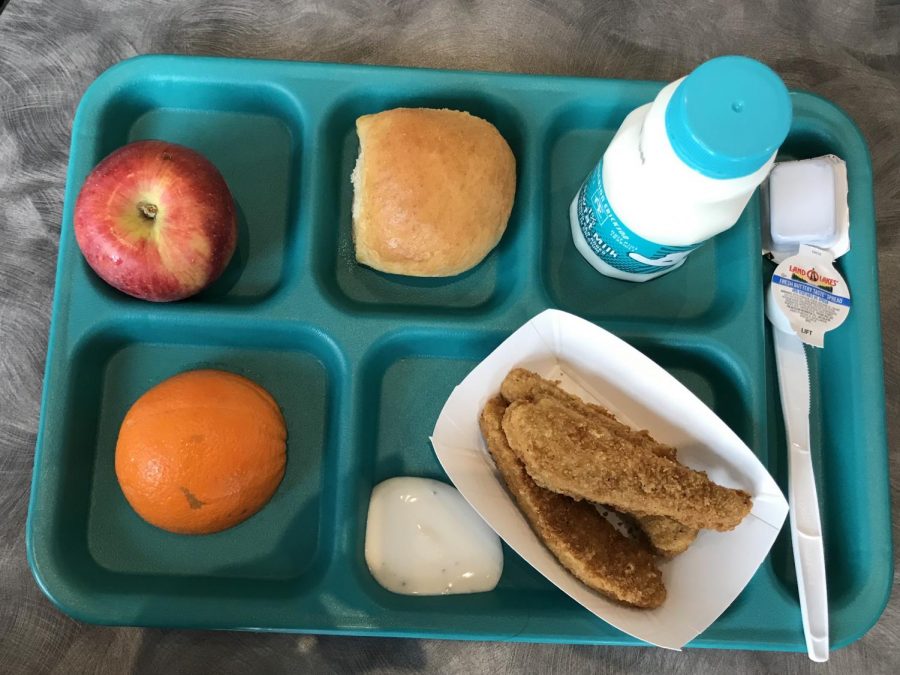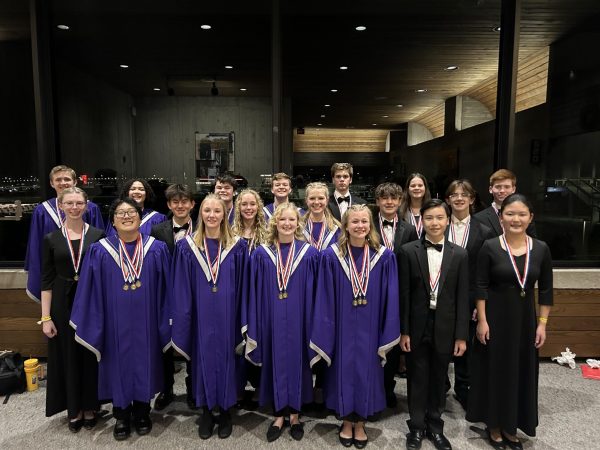The Secrets of School Lunch
The tedious preparation of school lunches often goes unnoticed here at Liberty High School. I dove deep into how the lunches are put together and what the students truly think of them.
Image of Alexandra Hernandez, sophomore, every day lunch tray.
According to the Food Research and Action Center, approximately 95% of students around the U.S. eat school lunch every day. Although, only 45% of students at Liberty get school lunch. Eating school lunches often can affect a student’s health and overall diet. So, it’s important to know the inside details about school lunches and the food that make them up. Sharon Meyers, a member of the Liberty High cafeteria staff, shared some details about her work day and her opinions on some topics regarding school lunches.
“My work day is 8 hours, but I’m here way past then. [The other workers] start at 7 am to 2:30 pm. They start when they come in at 7 am, they will assemble all the ingredients and stuff and then start the cooking process for the elementary. We try and have the carts out here that go to the elementary by 9:30 am,” said Meyers.
A lot of Liberty students have assumed that they wished the staff would prepare the meals at school. According to Meyers, each high school prepares meals for not only their own students but also for elementary students as well. Each day, the Liberty staff, along with the lunch staff at West and City, make meals to ship to elementary schools because no elementary school in the district has a kitchen.
Some students believe that school lunches aren’t very healthy.
Hannah Smith, sophomore, stated, “They are unhealthy and contribute to a lot of waste.”
While Poseybelle Stoeffler, sophomore, said, “School lunch never seems to be incredibly healthy. Sustaining, maybe, but not healthy.
“Lunches are cheaply made,” said Garrett Roggy, junior.
“The lunches are really big and it takes a long time to go through the lines,” stated Tanner Knight, freshman.
A lot of sources said they feel that the lunches don’t have enough options and they can tend to be boring, as Alexandra Hernandez,sophomore, had said, “bland and repetitive”.
The Healthy, Hunger-Free Kids Act was a law passed on December 13th, 2010 by Barack and Michelle Obama. The law makes sure that local farms are incorporated by giving the schools fresh ingredients, portion sizes are reduced, fruits and vegetables are properly balanced in school lunch meals, and fat free or 1% milk is offered.
When asked if the 2010 Act heavily restricts the food options the school can offer, Meyers stated, “It does to a certain extent, but we’re finding new ways to fix an old recipe if we have to modify it a little bit to make it meet, we’re finding creative ways to enhance it, and the USDA is helping out a lot or coming out with a new recipe or changing it to meet that act.”
The USDA is the U.S Department of Agriculture. It provides schools around the U.S. with healthy, low cost meals or recipes. Before the Healthy, Hunger-Free Kids Act was passed in 2010, schools were allowed to have vending machines and serve more unhealthy options in their meals. Now that the Act has been set in place, schools must serve meals healthy enough to meet the guidelines of the Act. Many schools do this by serving a certain amount of fruits and vegetables each day or changing the type of milk they offer. As Meyers said, the USDA helps them adapt to the act by tweaking recipes or making new recipes.
Another issue that impacts students’ diets is food allergies. Peanut allergies are the second most common food allergy and about 1 in every 50 children have a peanut or tree nut allergy. Cow’s milk is the most common allergy with 65% of the human population being lactose intolerant. And 20-30% of people in the world being celiac. Food allergies are extremely important to be aware of since many people have them. Many people also have personal dietary restrictions, such as vegetarian or vegan diets. With so many dietary restrictions, they can’t always accommodate vegetarian and vegan diets.
“We can’t obviously accommodate every allergy and every diet modification. We take the biggest ones, and then try to accommodate them. The vegetarians, we have gluten free, and obviously peanut butter is a big one, and we’re very sensitive, we try not to have many things that are manufactured in a tree nut facility just because of that tree nut allergy that a lot of people have. So if there ever is, we’ll make a note that this product is processed around tree nuts…” said Meyers.
Meyers stated that if anyone has ever had a bad experience or suggestions for improvement, students can feel free to talk to her or her staff. With the Healthy, Hunger Free Kids Act set in place, high schools are trying to adapt to the restrictions and accommodate allergies and dietary restrictions. The workers make the meals fresh everyday, with ingredients coming from local companies or farms to incorporate the agriculture that makes up Iowa. As seen above, school lunches might not be as mysterious and complex as we once thought.













